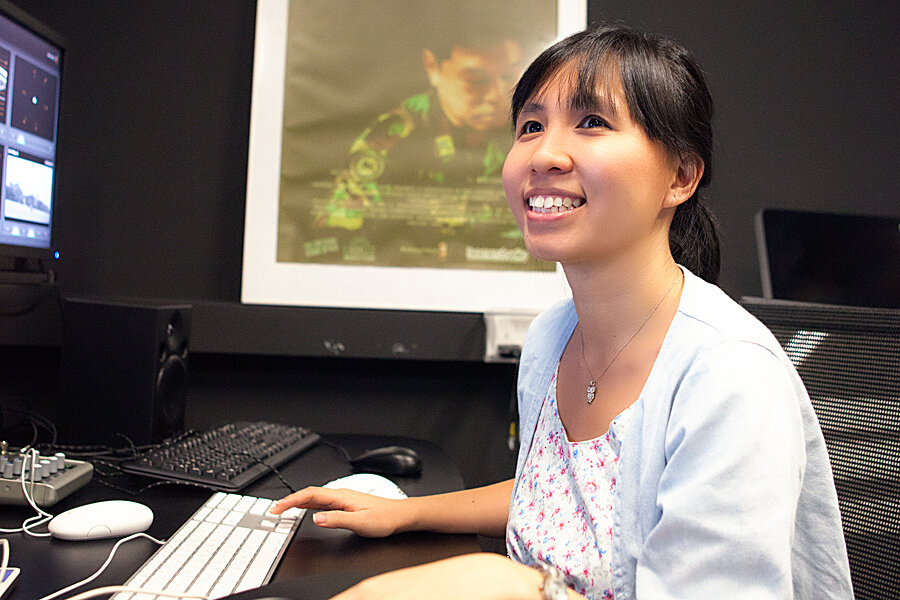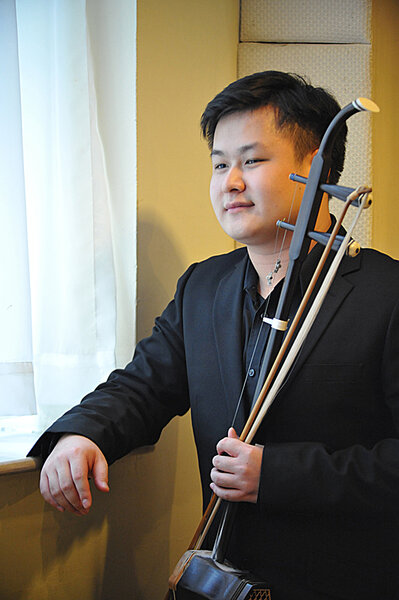Global education lessons: Singapore leads in STEM, now takes on the arts
Loading...
| Singapore
Chew Jun Ru knew he wanted to become a musician back in high school. But the eldest of four had parents who shared the traditional Singaporean view of the arts – they insisted he find a career with a solid future.
"It was crazy at the time. They could not believe what they were hearing," says Mr. Chew, now 24. "It's just music. I'm not doing drugs. It's not something I should be ashamed of."
In June, Chew – who plays the erhu, a traditional Chinese two-stringed bowed instrument – graduated from Nanyang Academy of Fine Arts, an undergraduate arts institution here. In August he left for Beijing on full scholarship to the China Conservatory of Music.
His ability to win over his parents – they couldn't be prouder now – speaks to the growing acceptance of, and focus on, arts education.
Innovation and creativity are seen as increasingly important to core curricula in this traditionally buttoned-up financial center, at a time when American schools are cutting back on arts. Singapore's embrace of the arts isn't just for art's sake, but because of the growing recognition that arts education is crucial to Singapore's growing innovation-driven economy.
This is new thinking for Singapore, where schools are pressure cookers of high-stakes exams and sky-high expectations, and where the overwhelming focus is on learning examinable skills and STEM (science, technology, engineering, and mathematics) courses.
Despite its international math scores – routinely at or near the top of PISA (Program for International Student Assessment) rankings, and well ahead of US scores – Singapore historically scores low in "perceived entrepreneurial capability" as determined by the Global Entrepreneurship Monitor, a worldwide study.
Hence the push for innovativeness and entrepreneurialism. Tan Thiam Soon, president of the Singapore Institute of Technology, cites the recent example of two students trained in creative digital design who landed jobs in the automotive industry, designing interactive dashboards.
"It shows how kids with an education in arts are not necessarily going to be employed in the arts industry," Mr. Tan says. "Industries of all kinds need students who have different approaches and can help them create an attractive product."
An earlier recognition of the need for creativity and innovation prompted Singapore's "Teach Less, Learn More" policy, an initiative that adds open periods into the schedule so that students have the time to delve more deeply into a subject or project. The policy seeks to move away from rote learning and repetitive tests – which young Singaporeans are very good at – with a focus on classroom interaction, individual expression, and innovative teaching approaches to promote greater creativity.
Singapore's first arts high school, The School of the Arts, opened in 2008, offering a joint arts and academic curriculum for students ages 13 to 18. The results to date are impressive: All students in the first graduating class passed the International Baccalaureate diploma exam last fall; 44 percent of them scored in the top 5 percent worldwide.
A surge in government funds has made professionally run arts programs accessible to all schools and reinforced among staff the importance of arts in learning.
Alicia Lim, a young professional who spent a few unhappy years in advertising thinking she was supposed to find a money-centered career, went back to school to study film and now runs a film incubator program. She thinks all students, regardless of career choice, need exposure to the arts.
"Arts," says Ms. Lim, "[is] about human relationships. It's about expression, communicating ideas and stories, changing mind-sets. That's what the arts are about. You don't find this in math [or] in science; it's totally different."








